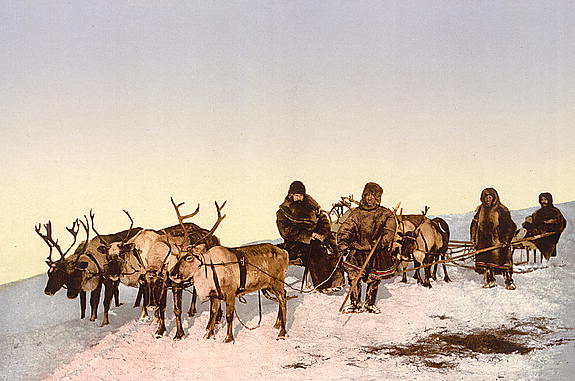Interactions
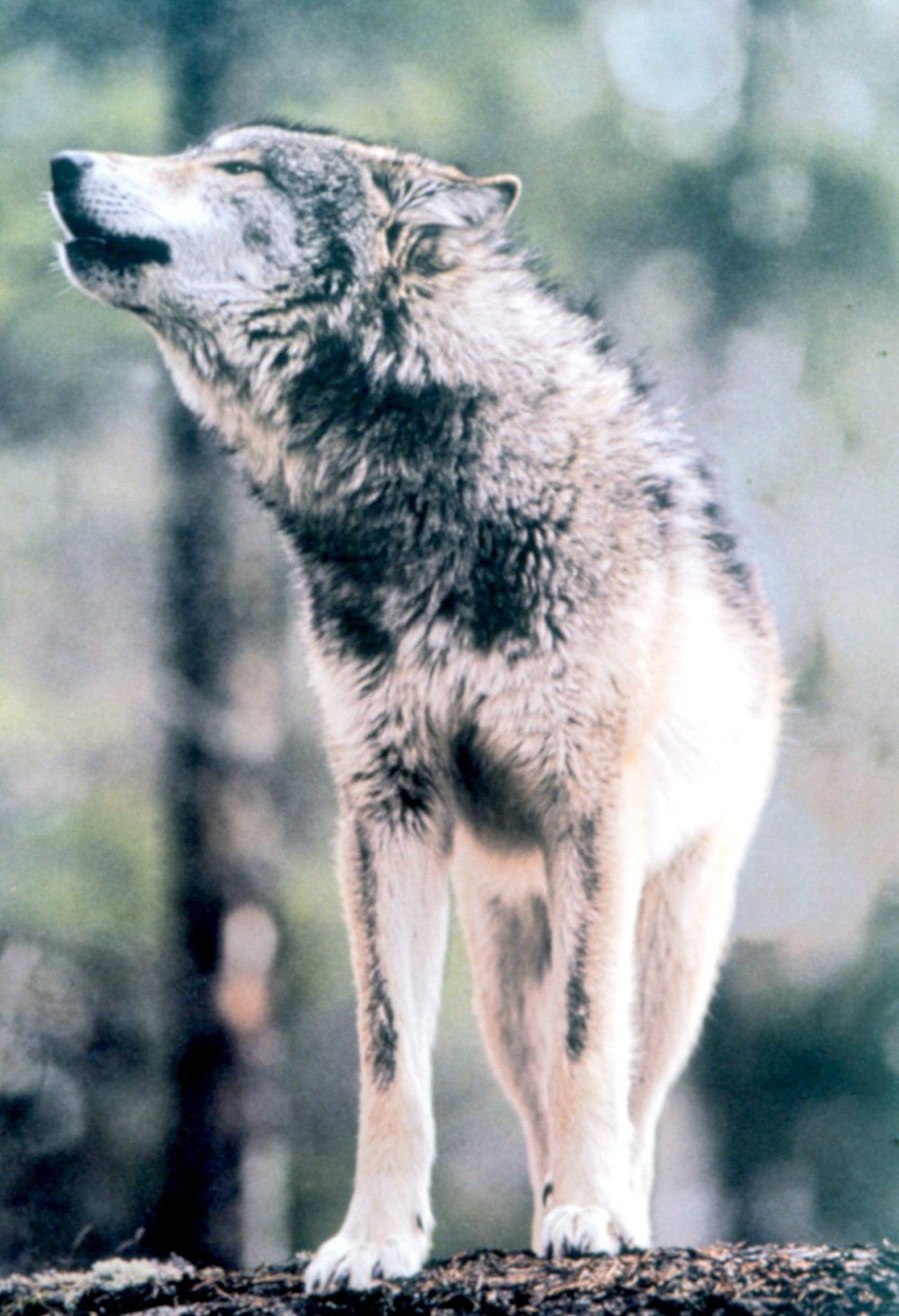 Reindeer
are subject to predatory interactions with other species in their habitat, and
calves are especially vulnerable during their first week of life.
Grizzly bears, American black bears, wolverine, lynx, and especially gray
wolves comprise the majority of reindeer
predators. Adult reindeer aren't as
susceptible until they reach old age and become weakened. One of the main
reasons they travel in herds is for safety in numbers, and so more can watch out
for potential predators. Thus, they are an essential part of the food chain for
these larger carnivorous predators.17
Reindeer are involved in mutualistic interactions with
bacteria living in the rumen of their four-chambered stomach, allowing them to
break down cellulose that other organisms cannot. Learn more about this
process here. Reindeer also exert a negative impact on vegetation through their foraging
activities as well as trampling that occurs during migrations of large herds,
which kills off much of the natural flora. Due to the harsh
arctic
climate, re-growth occurs very slowly due to low productivity rates.
Trampling of large herds also destroys the upper horizons of the soil,
making it more susceptible to erosion.
Lichen and moss dominated tundra
becomes easily converted to steppe-like
vegetation.4
Reindeer
are subject to predatory interactions with other species in their habitat, and
calves are especially vulnerable during their first week of life.
Grizzly bears, American black bears, wolverine, lynx, and especially gray
wolves comprise the majority of reindeer
predators. Adult reindeer aren't as
susceptible until they reach old age and become weakened. One of the main
reasons they travel in herds is for safety in numbers, and so more can watch out
for potential predators. Thus, they are an essential part of the food chain for
these larger carnivorous predators.17
Reindeer are involved in mutualistic interactions with
bacteria living in the rumen of their four-chambered stomach, allowing them to
break down cellulose that other organisms cannot. Learn more about this
process here. Reindeer also exert a negative impact on vegetation through their foraging
activities as well as trampling that occurs during migrations of large herds,
which kills off much of the natural flora. Due to the harsh
arctic
climate, re-growth occurs very slowly due to low productivity rates.
Trampling of large herds also destroys the upper horizons of the soil,
making it more susceptible to erosion.
Lichen and moss dominated tundra
becomes easily converted to steppe-like
vegetation.4
Humans also take advantage of reindeer, and they have been
used for meat,
fur, and
antlers. Reindeer have been hunted by humans for at least 50,000 years.
In years past, hides were used to make jackets, hoods, boots, and tents,
and reindeer fat was burned in lamps.
Antlers were also used to make needles, knife handles, sled runners,
fishhooks, and other tools. Within
the last several thousand years, peoples of northern Asia and Europe began to
catch and domesticate reindeer, using them for milk.
Several Scandinavian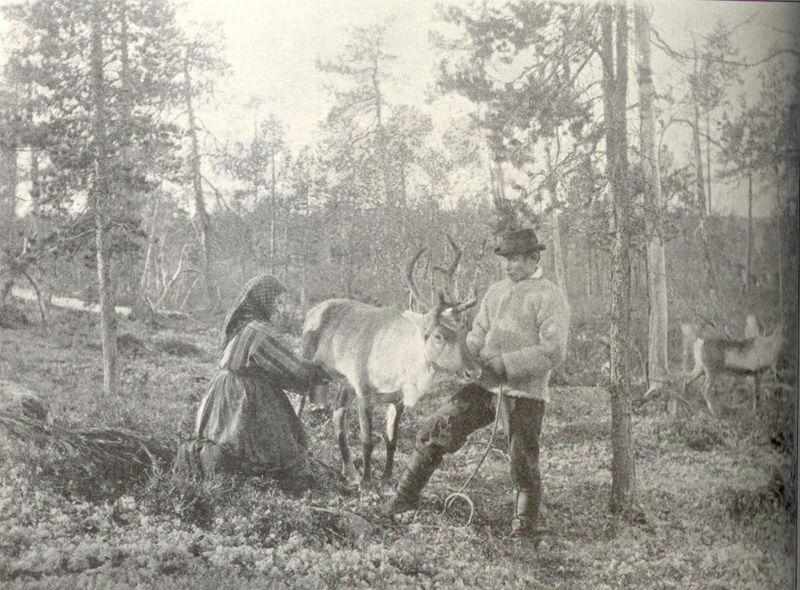 ,
American, and Siberian native cultures centered around herding caribou, and many
indigenous people of the arctic still practice
reindeer herding. The practice of herding began by scaring away wild reindeer
cows just after calving season, and when they ran away the fawns were left
behind. The fawns were then taken
and easily tamed.9
Some were also trained to carry riders on their backs and pull sleighs across
the snow-covered ground. They are able to pull up to 300 pounds, 50 miles a day,
and at 15 miles per hour!2
Before this, dogs were used to pull loads, but reindeer were thought
to have advantages such as being able to feed itself, and being able to serve as
food for the human if emergency arose.
In blowing wind, it is hard for dogs to travel, but this isn't a problem
for the reindeer who are used to harsh
conditions. The deer can pull
uphill, down-hill, and on trail or no trail
areas
where it is even hard for humans to walk through the snow.
This made the reindeer sledge the new form of transportation.11
,
American, and Siberian native cultures centered around herding caribou, and many
indigenous people of the arctic still practice
reindeer herding. The practice of herding began by scaring away wild reindeer
cows just after calving season, and when they ran away the fawns were left
behind. The fawns were then taken
and easily tamed.9
Some were also trained to carry riders on their backs and pull sleighs across
the snow-covered ground. They are able to pull up to 300 pounds, 50 miles a day,
and at 15 miles per hour!2
Before this, dogs were used to pull loads, but reindeer were thought
to have advantages such as being able to feed itself, and being able to serve as
food for the human if emergency arose.
In blowing wind, it is hard for dogs to travel, but this isn't a problem
for the reindeer who are used to harsh
conditions. The deer can pull
uphill, down-hill, and on trail or no trail
areas
where it is even hard for humans to walk through the snow.
This made the reindeer sledge the new form of transportation.11
More modernly, reindeer have begun to be overhunted, and
have lost a large portion of their
natural habitats with increasing dam, highway
and oil pipeline construction,
and also forestry and logging. When
extensive patches of coniferous forests are logged, the reindeer population
increases. However, as this occurs,
more predators such as the gray wolf move in because prey are more abundant.15
At one time there were over 10 million reindeer in the north, but now
there are less than 500,000. The
worldwide population is thought to only be around 5 million.
In fact, caribou in the U.S with the exception of Alaska are now
considered endangered. The only extinct herds are of the woodland species, not
the barren ground/Arctic species that are found in Alaska.
In fact, hunting of the woodland caribou is no longer allowed, but
poaching still occurs. The largest herds are now found in Alaska, Canada, and
Russia. They are also commonly seen
in petting zoos and corrals especially around Christmas time.17
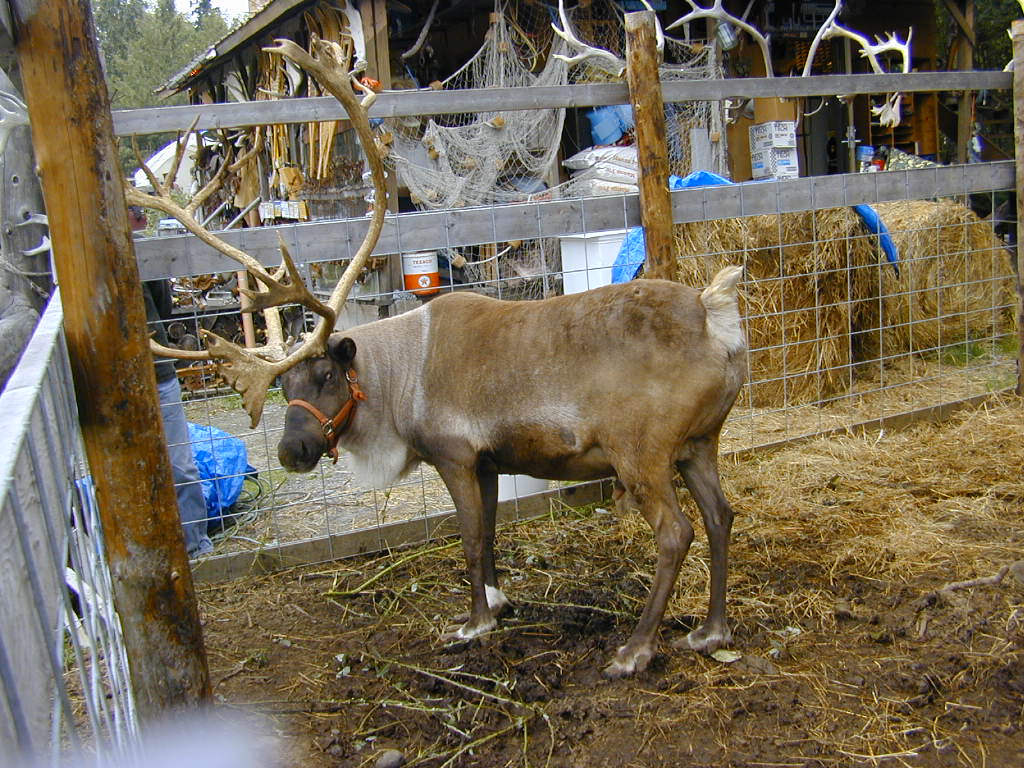
Semi-domesticated reindeer gain most of
their food in the wild and occupy a wide range, but are kept within that area by
guard dogs and herders on snowmobiles.
They are able to graze freely outdoors, they
can mix with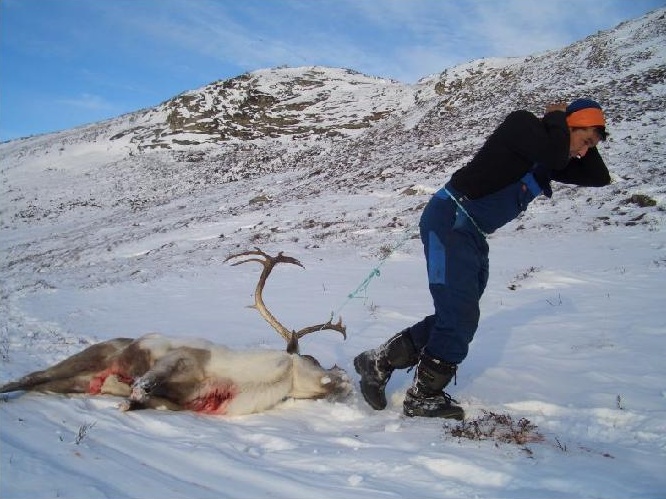 wild populations of reindeer. To
prevent this cross-breeding, measures such as setting up deer fences and
protected areas have been taken to preserve the genetic identity of the wild
species. It is during the summer
that the reindeer are herded together and the new calves are marked on the ears.
After the rut in fall they are also rounded up and separated into
those to be slaughtered and those to be kept for breeding.
Most slaughtered deer are calves.16
wild populations of reindeer. To
prevent this cross-breeding, measures such as setting up deer fences and
protected areas have been taken to preserve the genetic identity of the wild
species. It is during the summer
that the reindeer are herded together and the new calves are marked on the ears.
After the rut in fall they are also rounded up and separated into
those to be slaughtered and those to be kept for breeding.
Most slaughtered deer are calves.16
Even today in reindeer territory, reindeer are slaughtered
for meat. Various foods such as
soups, stews, roasts, steaks, and cold cuts are made.
The meat is lean and low in fat, and in many cases is dried, salted, or
smoked. Reindeer milk is rare, but
can be drunk, dried and used in coffee, or used to prepare ice cream and in
years past, butter.16
